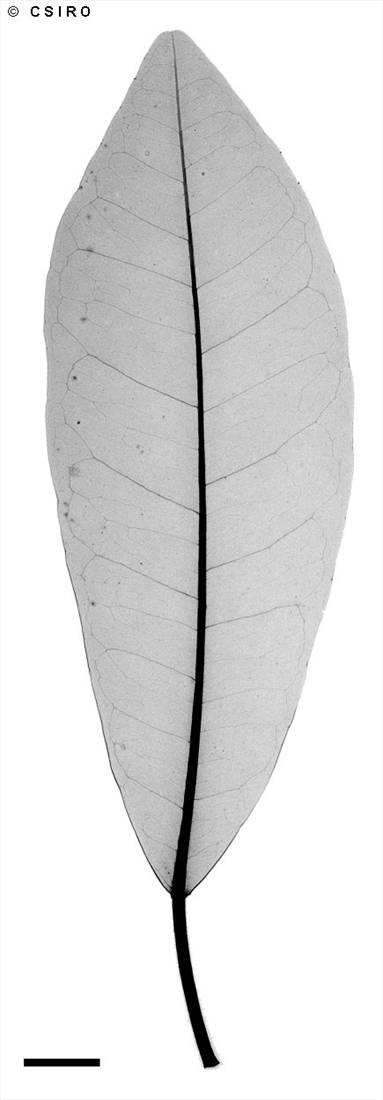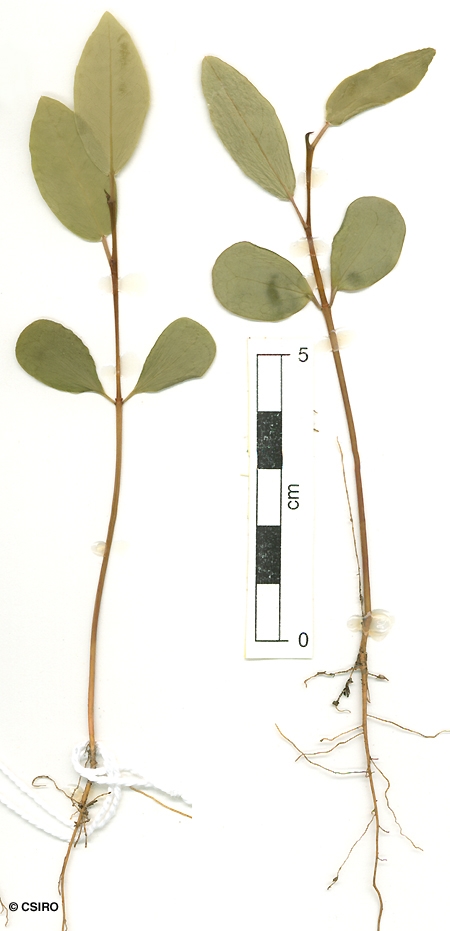Australian Tropical Rainforest Plants - Online edition
Excoecaria agallocha L.




Linnaeus, C. von (1759) Systema Naturae ed. 10 : 1288. Type: Tropical Asia, Malaya & Pacific Islands.
Mangrove, Blind Your Eye; Blind Your Eye; Blind Your Eye Mangrove; Blind-your-eyes-tree; Milky Mangrove; Blinding Tree; Mangrove, Milky; River Poisonous Tree; Scrub Poison Tree
Leaves often produced in a tight spiral and thus appear opposite or whorled. Leaf blades about 6-10.5 x 3-5 cm, petioles about 1.5-2 cm long, channelled on the upper surface. Apex retuse with a gland in the indentation. Stipules small, 1.5-2 mm long. Twigs, petioles and leaves produce a milky exudate when broken. Glands normally visible, one or more on each side of the leaf blade near its junction with the petiole. Lateral veins about 12-18 on each side of the midrib usually forming loops inside the blade margin.
Flowers in spikes, about 40-70 mm long, flowers about 1.5-2 mm diam., emitting an odour which has been described as both pleasant and unpleasant. Each flower enveloped in a bi-glandular bract before anthesis so that the spike resembles a narrow gymnosperm cone. Pollen yellow. Plants +/- deciduous when flowering. Stigma 3-armed like an amputee starfish.
Cotyledons obovate, about 18-19 x 12-13 mm, clothed in numerous pale surface glands, petioles about 2-3 mm long. First pair of leaves elliptic or ovate, base +/- auriculate. Petioles channelled on the upper surface. All parts produce a milky exudate. At the tenth leaf stage: stipules triangular, about 1 mm long, closely appressed to the stem. Leaf blade with 1-5 small teeth on each side. Seed germination time 13 days.
This species should be treated with caution. The milky exudate produced by most plant parts can cause intense pain and temporary blindness if it gets into the eyes and painful blistering on other sensitive body parts. It is also poisonous to stock. Everist (1974).
This species may also have medicinal properties and can be used as an arrow poison.
The vapour inhaled while collecting this plant is extremely irritating, producing a burning sensation in the throat accompanied by sore eyes and a headache. Cribb (1981).





